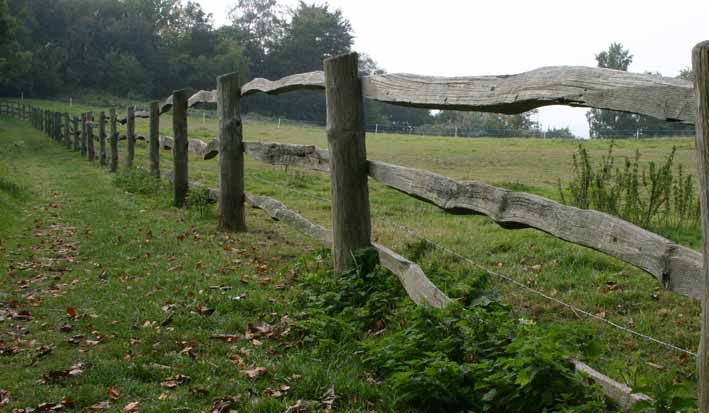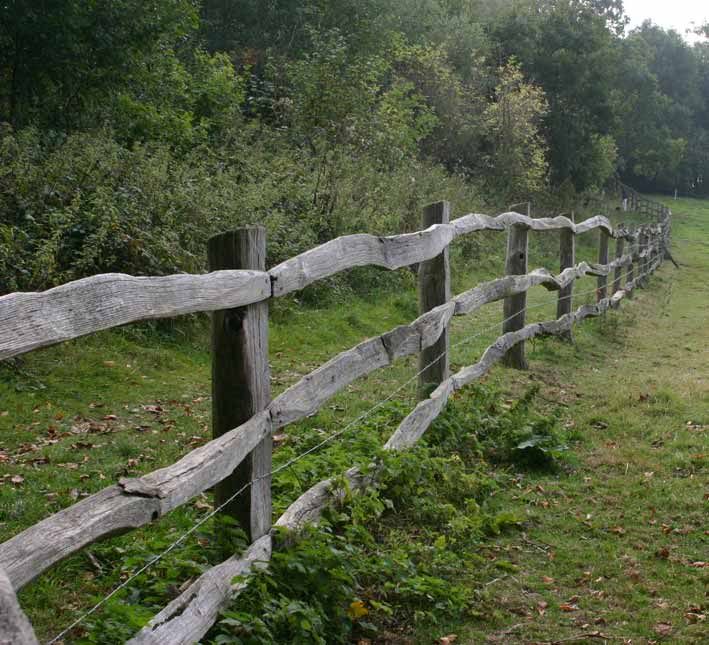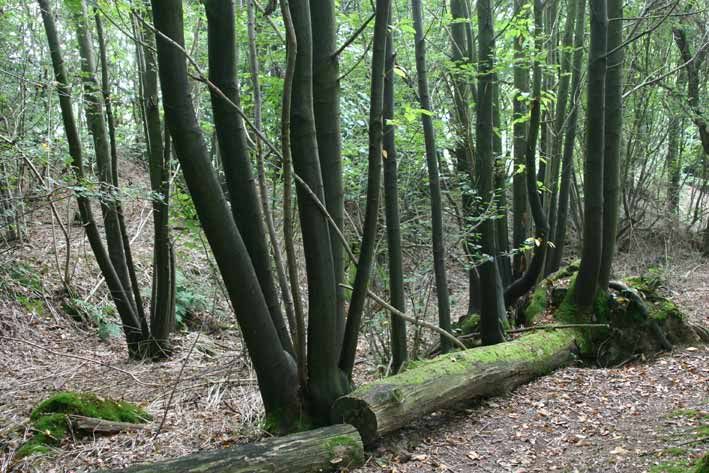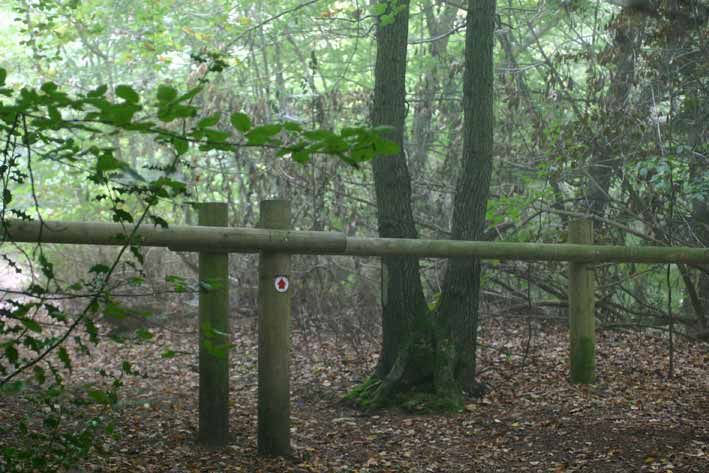I built this fence 20 years ago whilst working for the National Trust at Ide Hill in Kent, we used storm blown sweet chestnut which came from the wood a few yards away. I visited the property for the first time again last weekend and was pleased to see the fence is holding up well.


Sweet chestnut has a high tanin content which means that it is naturally durable and does not rot, it also grows a new crop of poles quickly from a felled stump. This picture shows a trunk lying unrotted on the floor from the 87 storm and 20 year old regrowth, just ready to make a new fence.

I was lucky when I worked there to be taught by an old chap close to retirement who believed in making use of the wood on the property to make fences, already at that time then most people were using bought in tanalised fence posts. This is a horse barrier made at the same time.

And this is how horse barriers are made today on the same property, not the two young straight oaks, just the perfect diameter for making a horse barrier and posts yet the tanalised posts have been brought in from some distance and to my eye look suburban.



Sweet chestnut has a high tanin content which means that it is naturally durable and does not rot, it also grows a new crop of poles quickly from a felled stump. This picture shows a trunk lying unrotted on the floor from the 87 storm and 20 year old regrowth, just ready to make a new fence.

I was lucky when I worked there to be taught by an old chap close to retirement who believed in making use of the wood on the property to make fences, already at that time then most people were using bought in tanalised fence posts. This is a horse barrier made at the same time.

And this is how horse barriers are made today on the same property, not the two young straight oaks, just the perfect diameter for making a horse barrier and posts yet the tanalised posts have been brought in from some distance and to my eye look suburban.


